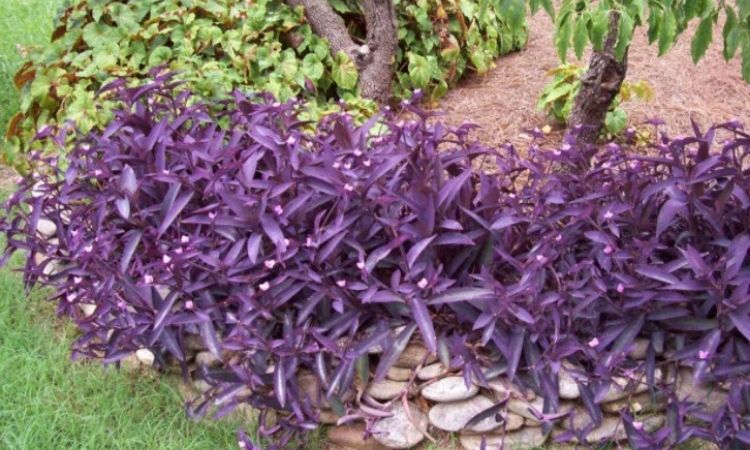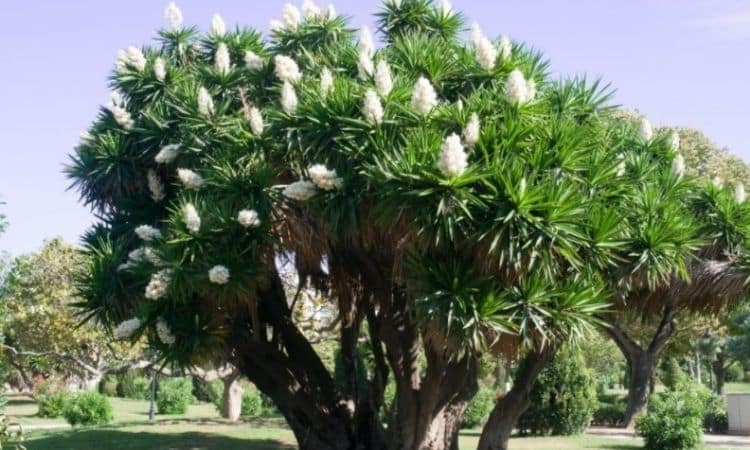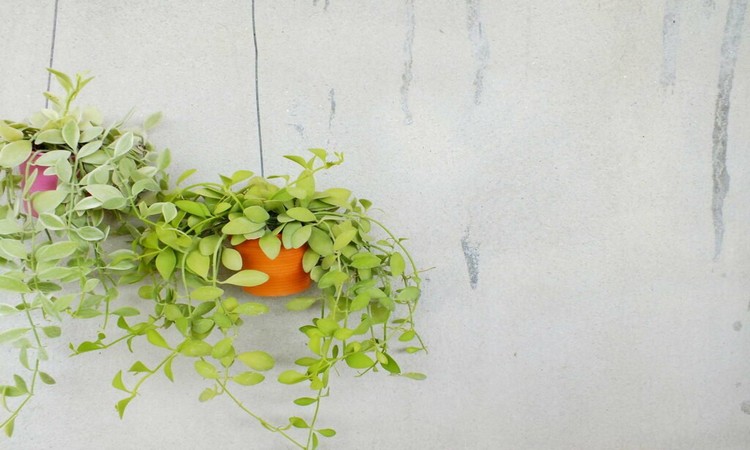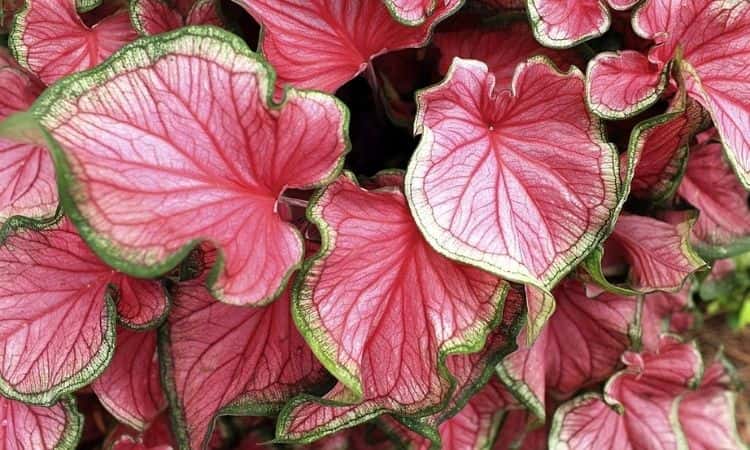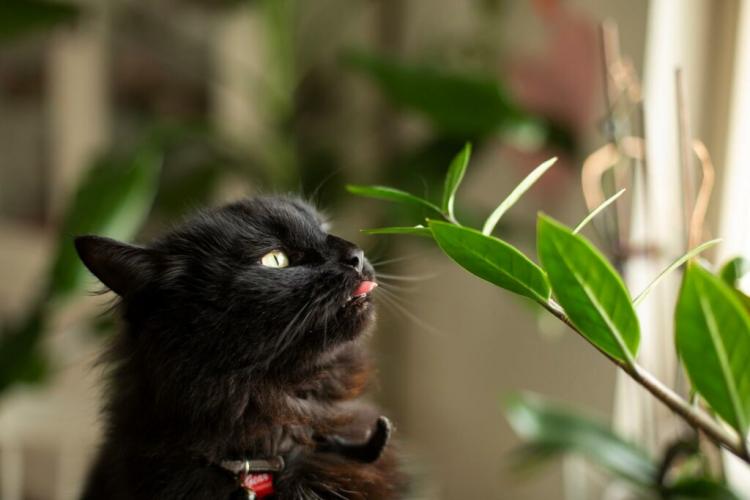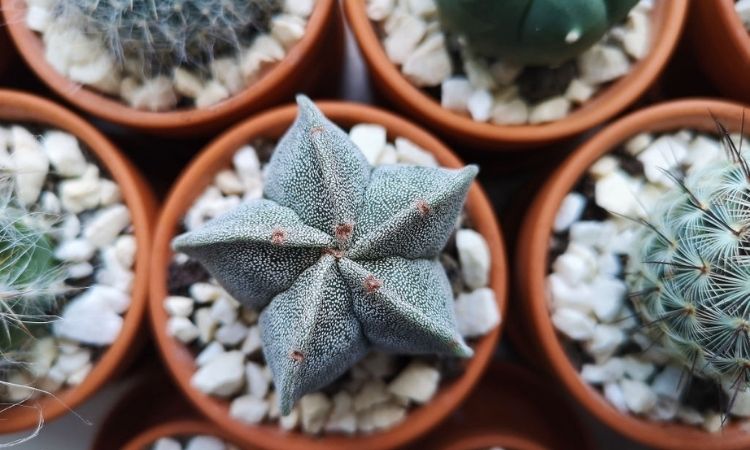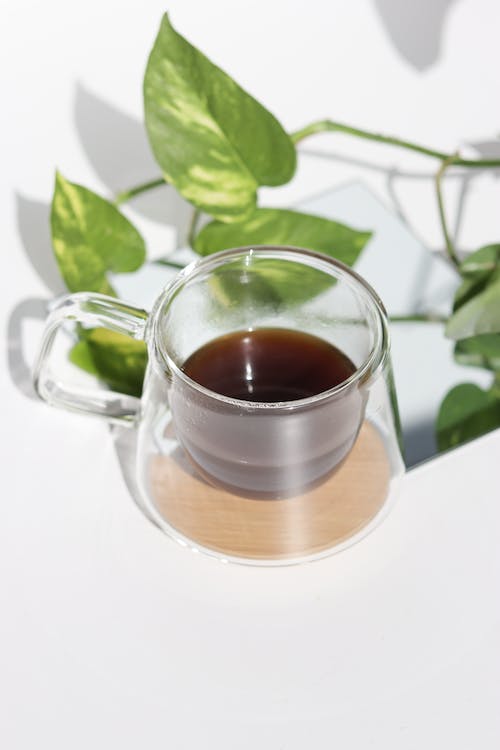Setcreasea Purpurea (Purple Heart)
The evergreen perennial Setcreasea is a plant with long shoots that adorn spectacular, pointed-topped leaves. It comes from Mexico. Such a flower is also popularly called the Purple Heart.
Today, netcreasia is widely cultivated outdoors in most regions located in subtropical and tropical latitudes. Moreover, in regions with a temperate climate, this plant is usually cultivated in indoor conditions.
Setcreasea is an ampelous plant that is part of the Kommelinov family. The bush grows only during the first two or three years and reaches a height of about 0.8 m. Then it stops growing. Both the shoots and the surface of the leaf plates are painted in a rich purple hue. When the leaves get old, their color fades and they have a faint turquoise-metallic tint. The seamy surface of the foliage is painted in a deep purple color.
Brief Description Of Cultivation
Table of Contents
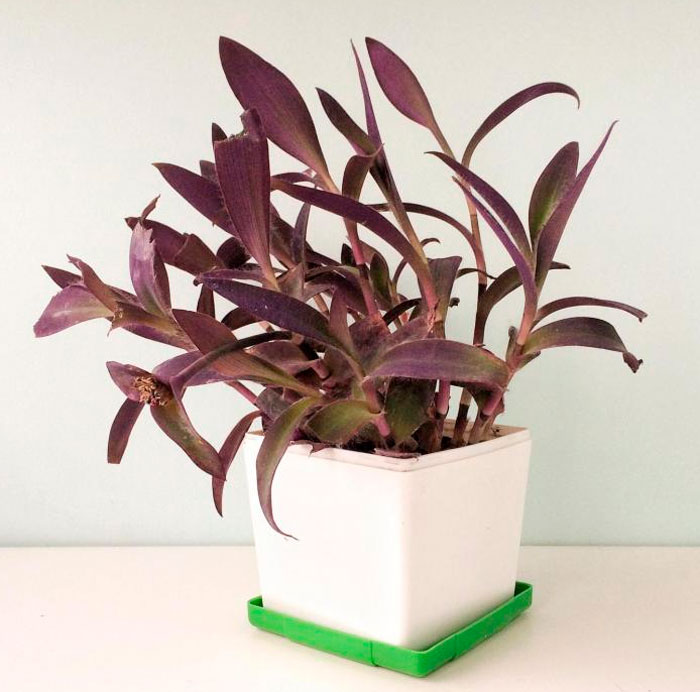
- Temperature. Such an ampelous plant develops normally at an air temperature of 10 to 24 degrees.
- Air humidity. The humidity level should be moderate.
- Illumination. Needs lots of bright light.
- Watering. In the summer, the substrate in the pot is moistened 2 times in 7 days, and in the winter months, it is reduced to 1 time in 7 days.
- Substrate. Optimal composition: sand, garden soil, and compost (1: 1: 1).
- Fertilizer. Topdressing is carried out in spring and summer with a frequency of 1 time per 4 weeks.
- Transplant. It is carried out only if necessary when the bush becomes cramped in the pot.
- Reproduction. Apical cuttings.
- Pruning. To keep the plant tidy, it is necessary to systematically prune the stems.
Home care for netcreasia
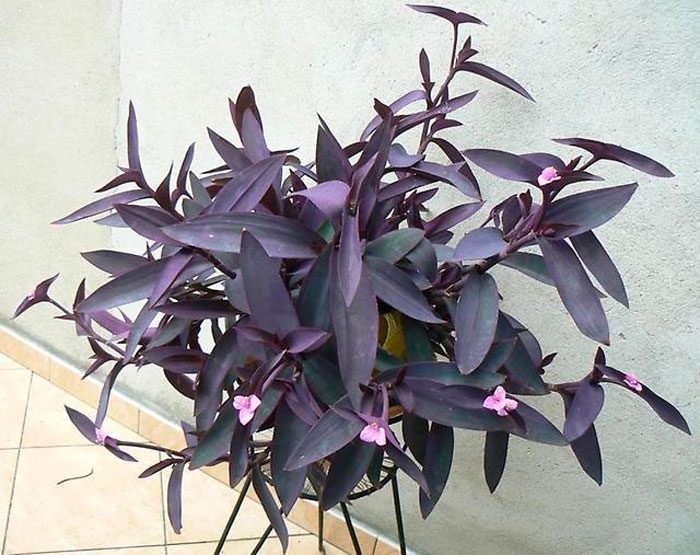
Under natural conditions, netcreasia purpurea prefers to grow in a humid subtropical climate, but it is able to quickly adapt to conditions other than natural ones. This plant is undemanding to care for, but nevertheless, when cultivating it, several rules and features should be taken into account.
Bloom
If you take care of the plant correctly, then its flowering will be lush and quite spectacular. Small purple-pink flowers adorn the bush from spring to the last summer days. They include three petals. To stimulate flowering, it is recommended to systematically pick off flowers that have begun to fade.
Temperature regime
Meshcreasia has no special requirements for air temperature. But at the same time, it grows poorly in the cold, since it belongs to a number of heat-loving crops. Please note that at temperatures below 8-10 degrees, the plant can be severely damaged and even die.
At the same time, an excessively high air temperature can also harm the plant. If the room is hotter than 25 degrees, this will negatively affect the appearance of the flower, and its shoots will be very weak.
Air humidity
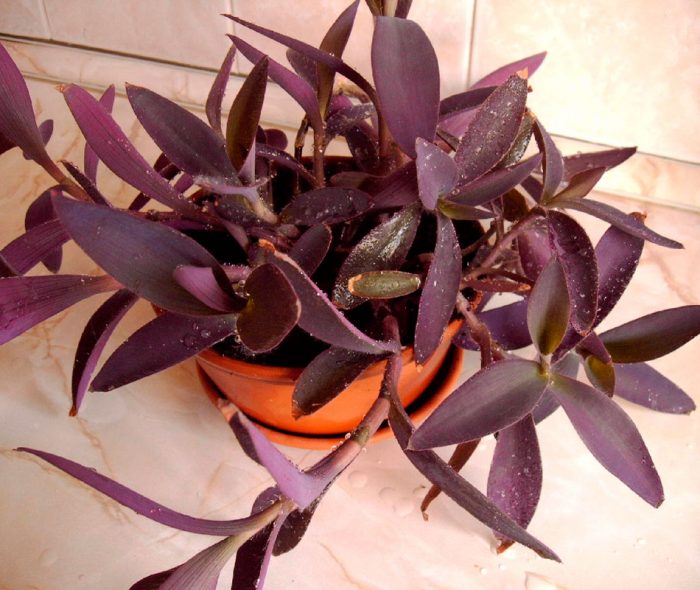
It is highly undesirable to moisten such a perennial from a spray bottle. It is also not recommended to use a damp sponge or cloth to remove dust from the foliage surface. The fact is that if water gets on the foliage, then stains form on its surface, which spoils the appearance of the flower. Use a dry cloth to remove dust.
Illumination
This culture is photophilous. But it should be borne in mind that in direct sunlight, it should be no longer than three hours a day. The best option for this plant is an oriental window sill, while the light should be diffused.
If the “purple queen” feels an acute lack of light, then thinning of its shoots is observed, while the foliage becomes faded. If it is not possible to rearrange the bush to a more illuminated place, then it is provided with supplementary lighting, using phytolamps for this. The plant should be under these lamps most of the day.
Watering
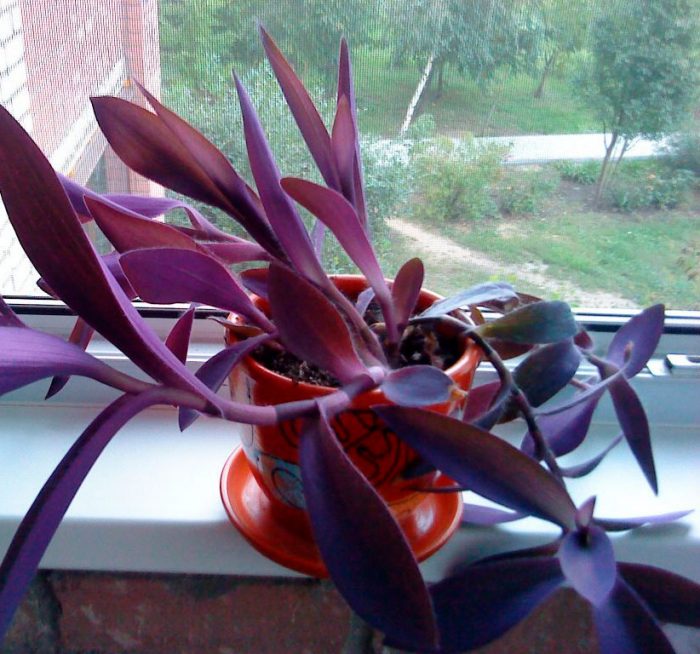
For good growth and development of netcreasia, the substrate in the pot should always be slightly moistened. But at the same time, in the warm season, you need to water the plant no more than twice every 7 days. To do this, use well-settled soft water, the temperature of which should be close to room temperature. If liquid stagnates in the pot, this will lead to decay of the root system.
To increase the air humidity, it is recommended to put an open container with water near the bush. You can also take a deep pallet, fill it with wet expanded clay, and put a flower pot on top.
In the cold season, the bush should be watered about once every 7 days. Strong drying of the substrate must not be allowed. Watering is carried out after the soil mixture becomes slightly damp. Remember that the mesh should not be in the immediate vicinity of working heating devices. The fact is that this can cause the bush to dry out.
Pot
When choosing a pot for planting the “purple queen”, you should focus on the size of the bush and its root system. A small pot is used to plant the appendix. As the plant grows up and grows, it is transplanted into a larger pot.
Substrate and fertilizers
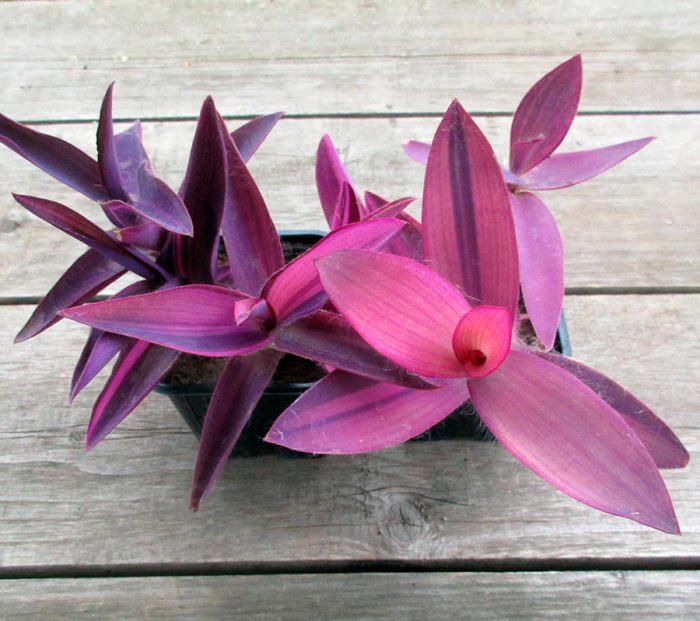
Particular attention should be paid to the choice of the soil mixture. It must be necessarily loose and light. In order to prepare the substrate, you need to mix sod soil, peat, humus, and sand in equal parts. You can take only a few components. It is also recommended to add a small amount of charcoal to the finished soil mixture.
If the soil mixture in the pot is depleted, then it is recommended to feed once every 30 days. For this, mineral complexes for home crops are used. The plant is fed only in spring and summer. With a slowdown in the growth of shoots or the absence of flowering, it is recommended to feed the bush more often, namely, once every 2 weeks.
Pruning
Indoor meshcreasia needs pruning, which is carried out systematically. Pruning of growing stems is carried out in order to form a more spectacular and dense bush. If the length of the shoot exceeds 0.4 m, then it will begin to thin out, while the distance between the leaf plates will increase markedly. This negatively affects the decorativeness of the ampelous plant. The trimmed parts of the stems can be used as cuttings.
Mesh transplant
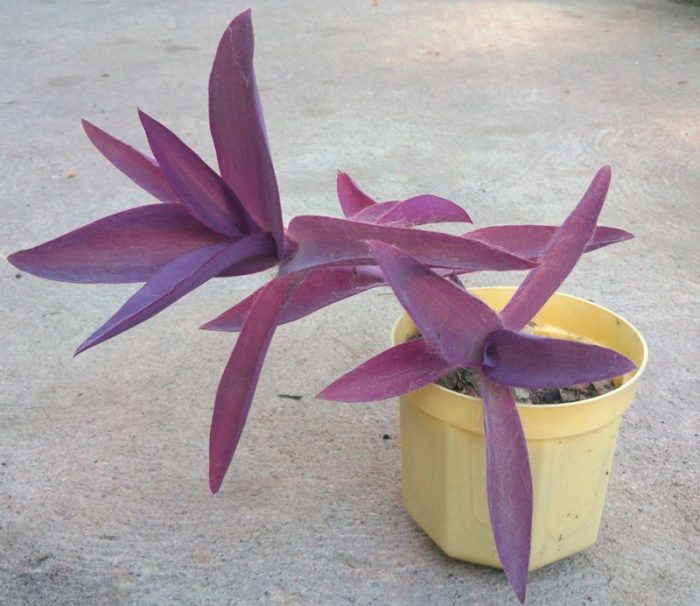
The plant is transplanted only after the pot becomes small. At the same time, it is too often extremely undesirable to carry out this procedure. On average, the netcreasia is transplanted 1 or 2 times a year.
The optimal time for transplanting in spring. If for some reason the plant has lost its decorative effect, then the transplant will not improve the situation. In this case, it is recommended to update the bush by rooting the apical cuttings.
Dormant period
The dormant period for the “purple queen” is observed in winter: flowering stops, and the growth of shoots is suspended. The plant at this time should not be disturbed without special need and fed. Watering it infrequently, but at the same time not allowing the substrate to dry out.
Propagation of netcreasia by cuttings
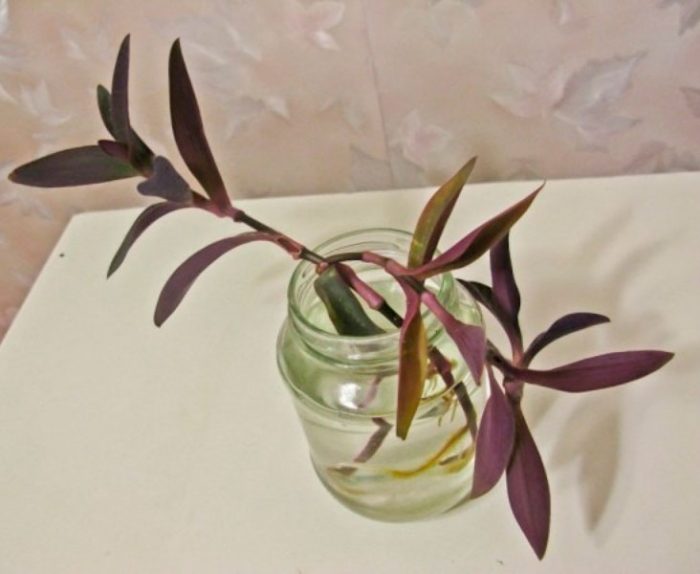
Apical cuttings are used for the reproduction of purple netcreasia. The optimal cutting length is 8 to 10 centimeters. A glass of water is used to root the segment, it can also be immediately planted in the substrate. It can also be rooted in a substrate consisting of sphagnum and peat. The roots grow back very quickly. In order to get a thicker and more beautiful bush, several cuttings should be planted in one container at the same time. Don’t forget to pinch the tops.
Possible problems

The netcreasia growing at home is quite resistant to pests. However, sometimes such pests as: scale insects, spider mites and whiteflies still settle on it. If you move the bush to fresh air in the warm season, then caterpillars and garden butterflies will pose a danger to it. However, if the plant is strong and healthy, then the pests will not be able to cause tangible harm to it.
If pests are found on a plant, it should be isolated from other indoor crops as soon as possible. It is also not recommended to delay pest control, since in most cases they multiply quickly, which greatly complicates the task. For the treatment of netcreasia, you can use both folk remedies and pesticides. For example, foliage and shoots can be treated with a soap solution and garlic infusion.
If the rules for caring for the plant are violated, problems such as:
- The slowdown in growth or wilting of the bush. Most likely, the flower is experiencing an acute lack of nutrients.
- The bush has lost its decorative effect. With a lack of light, the shoots are stretched and the internodes increase. At the same time, the foliage changes its bright color to green and becomes smaller. The same changes are characteristic of a plant that has been moved to a new location. As a rule, it reacts negatively to changes in light intensity.
- Exposure of the lower part of the stems. This is due to the natural aging of the plant. Rejuvenate the bush with cuttings.
- Whitish specks on foliage. These are burns from direct sunlight. Move the shrub to a place with diffused light.
- The plant withers, rot appears on the stems. Excessively dense substrate. Because of this, the roots do not receive enough oxygen for normal development.
- Drying of the tips of the leaf plates. Roots are very cramped incapacity. Transplant the bush into a larger pot.
- The rot has appeared on the bottom of the shoots and on the roots. Liquid regularly stagnates in the substrate.
- Very slow shoot growth. This is due to excessively poor or sparse watering. At the same time, young foliage does not appear, and the old one begins to wither. The thinning and curvature of the shoots are also observed.
